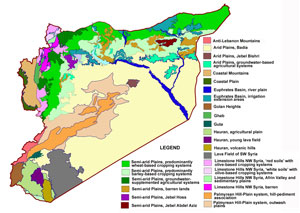Research
Diversification & Sustainable Intensification of Production Systems Program
New methods of land suitability analysis based on the matching in GIS of biophysical environments with the environmental requirements of crops and production systems are operationalized. They require limited data and rely on the capturing of expert knowledge about crop-environment interactions and their integration in empirical decision models using crisp or fuzzy rules. The map products currently available include estimates of the likelihood of belonging to a particular suitability class and the nature of resource problems. The generalized framework for this approach is illustrated in Fig.5 which shows the various steps of the land suitability evaluation process.
GISU is developing map products and methodologies for targeting different crops and varieties to specific environments.

Fig.5. Overview of the empirical decision model used for land suitability studies
While refining the above methods, the GISU has made a start with developing mapping products specifically targeting agricultural decision-makers using the concept of 'agricultural regions. Agricultural regions are integrated spatial units in which available water resources, climate, terrain, and soil conditions combine to create unique environments. These are associated with distinct farming systems and land-use and settlement patterns. The concept of agricultural regions is particularly useful to establish development profiles for individualized spatial entities ('development domains') at sub-national level by providing a spatial communality for land use policy recommendations, agricultural investment alternatives etc. Collaboration has been established with NARS in Syria, Turkey, and Iran to establish similar spatial frameworks for respective countries (Fig.6).



